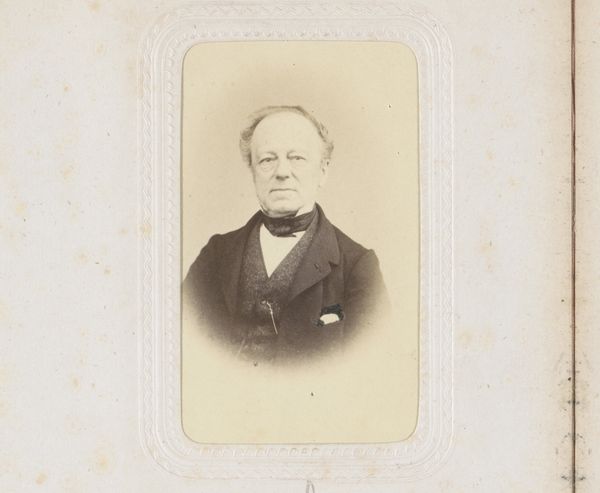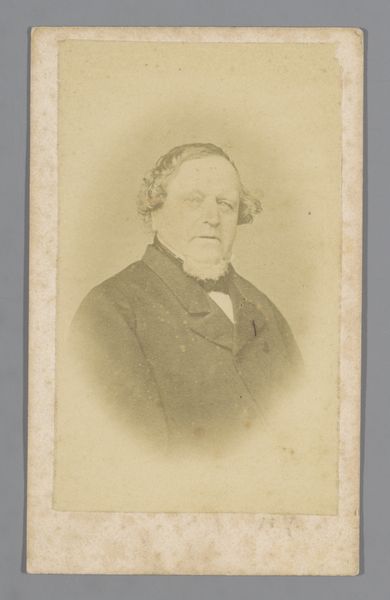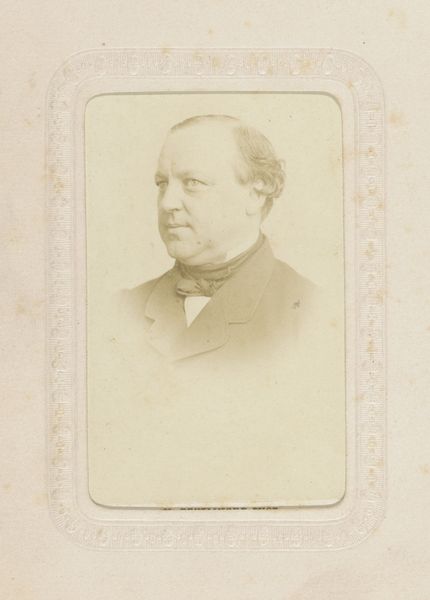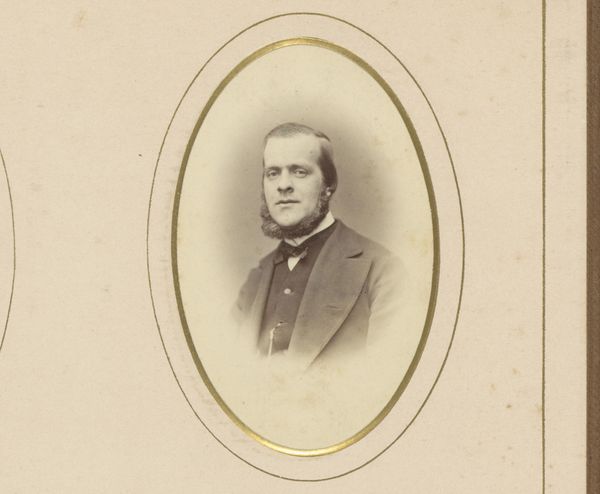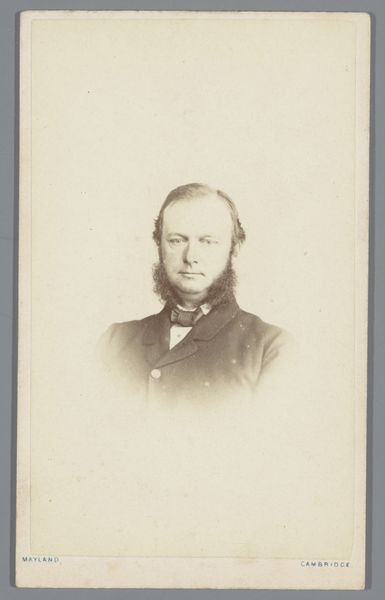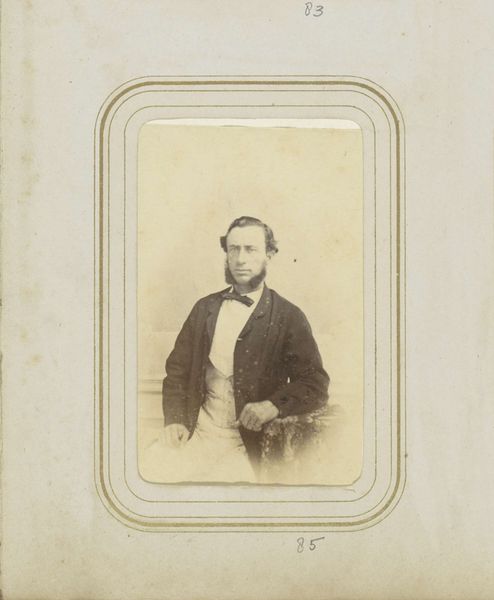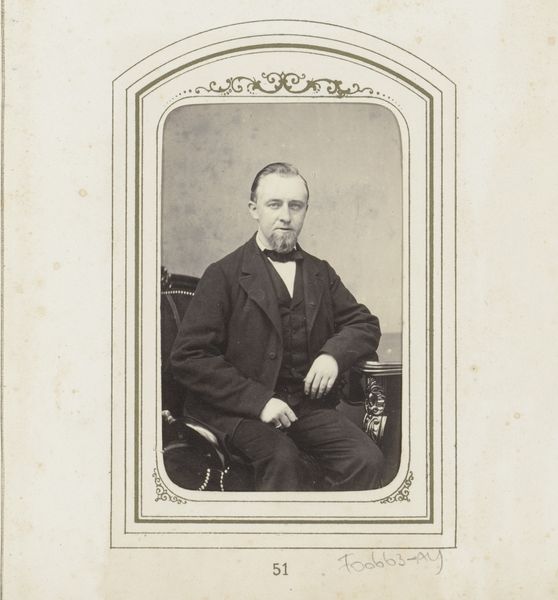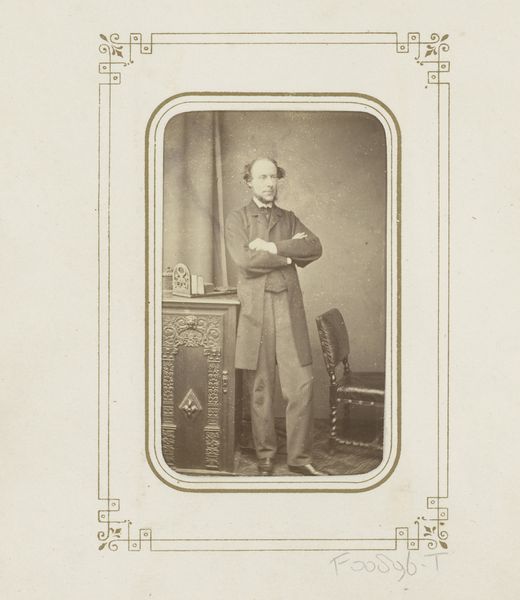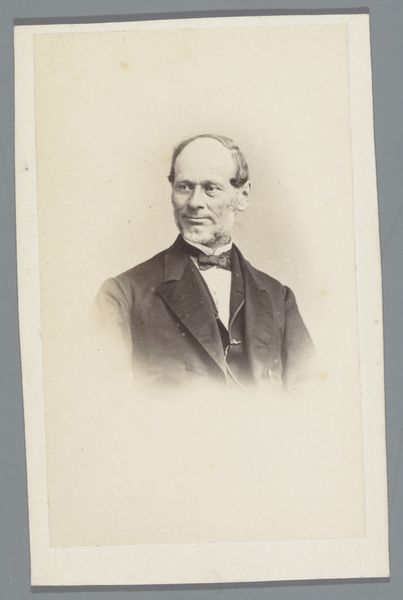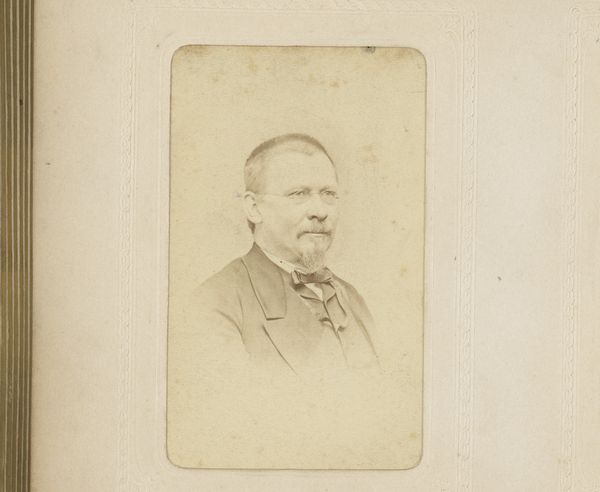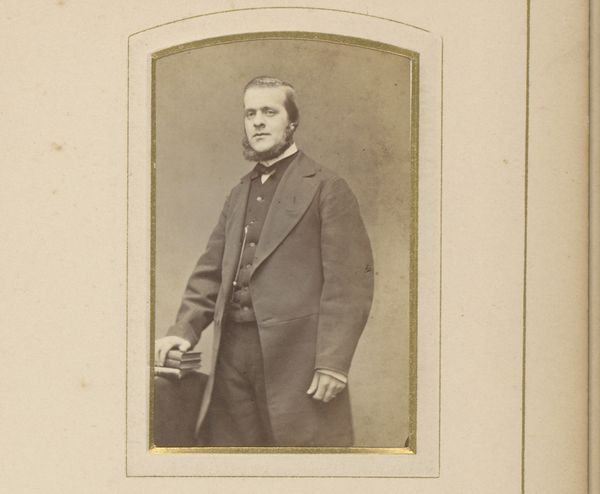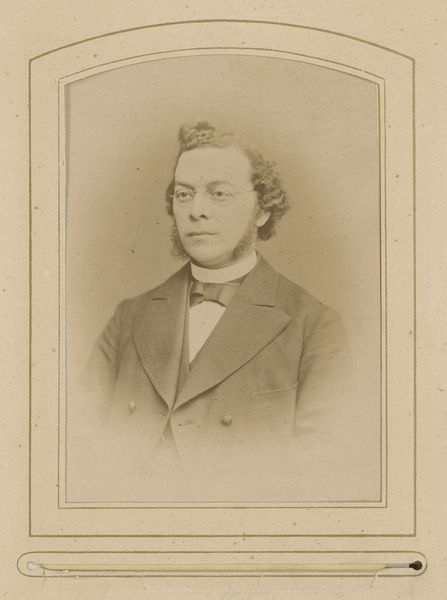
photography
#
portrait
#
photography
#
historical photography
#
genre-painting
#
realism
Dimensions: height 82 mm, width 50 mm
Copyright: Rijks Museum: Open Domain
Curator: Leonard Stollenwerk gifts us a photographic "Portret van een man, aangeduid als C. Roomer," likely created between 1864 and 1883. It’s a remarkable slice of genre-painting rooted in the realities of the era, executed with a distinct realistic style. Editor: He seems weighed down, doesn’t he? Almost like the gravity of his time is pulling on his suit. The oval frame adds to this sensation, like he is captured in an old snow globe. Curator: Indeed. Photography during this period had very particular conventions. Think of the chemicals required, the elaborate posing, the labor of the photographer developing these glass plate negatives! It's a material dance between industry and artistry. Editor: I bet C. Roomer had to stand still for a long time, and it would be unnerving to think everyone wanted this stoic look! Did photography even permit any sort of joy in those days, or did you risk looking ridiculous to future generations? Curator: Well, access to such portraiture would've been largely confined to the middle or upper classes. There are notions around this being a very important and somewhat laborious project, imbuing it with a gravity of its own. Also, you’d have to consider what it cost for developing chemicals at the time; photographic studios really built up that middle class market. Editor: Perhaps that's why he looks serious, thinking about the photographic studio expenses! But seriously, I do think there’s something deeply moving about such earnest representations. It invites one to look deeper, into the psychology of the sitter himself. Curator: I completely agree; it transcends simply documenting someone. And that material consideration of photography as commodity brings this very personal and realistic portrait to the public in a whole new way. Editor: It truly does highlight photography’s power to make these private moments public and somewhat immortal, despite that melancholy! Curator: Indeed. Looking through this material lens opens new doors to interpreting photographs from a socio-economic viewpoint. Editor: Well put!
Comments
No comments
Be the first to comment and join the conversation on the ultimate creative platform.
